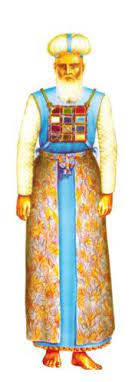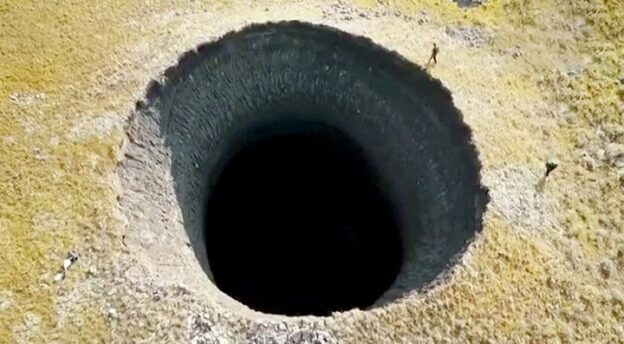An essay on the misrepresentation of the Jewish view of abortion was published by Religion News Service, and can be read here.


An essay on the misrepresentation of the Jewish view of abortion was published by Religion News Service, and can be read here.

How despondent Pinchas could have easily felt when his grandfather, father and uncles, and all their future descendants, were chosen by Hashem to be cohanim (Shemos, 28:1). He himself, having been born before that moment, was not among that role’s grantees.
He probably did not mind, though. Because his subsequent action (at the end of parshas Balak), the killing of Zimri and Cozbi, could only be a proper act – and Hashem confirmed its propriety – if it had been committed by an utterly selfless person. One needs a sense of self to feel slighted.
How ironic, though, is the fact that, had Pinchas actually been a cohein at the time of his violent act, the act, justified though it was, would have rendered him unable to serve in that special role. Because a cohein who has killed a person, even properly or accidentally, is disqualified to serve as a cohein.
Hashem made Pinchas a cohein only after – in fact, because – of his act (Zevachim 101b). Pinchas’s ultimate status as a cohein, in the end, depended on his having been “left out” when his relatives were granted that status.
Few of us are truly selfless, and many of us are easily slighted. When we are, we do well to recall Pinchas’ experience. The Shulchan Aruch (Orach Chaim 230:5) actually states as halacha that “One should be accustomed to say: All that Hashem does is for the best.”
Sometimes we are fortunate, as Pinchas was, to live to see how that is true.
But even when we don’t, it still is.
© 2021 Rabbi Avi Shafran

Most people, if they are familiar with the name at all, associate “Chateaubriand” with a meat dish. But François-René, vicomte de Chateaubriand was a famous French author who died in 1848. He was not well disposed toward Jews, considering them cursed for the farcical sin of deicide, and wrote approvingly about how “Humanity has put the Jewish race in quarantine.”
And yet, some other words of his are, even coming from so poisoned a pen, more than worthy for Jewish pondering during the annual period of the “Three Weeks” just begun, during which Jews mourn the destruction of the Holy Temples in Jerusalem and the Jewish exile. I am indebted to the late British Chief Rabbi Jonathan Sacks for, in his Haggada, bringing Chateaubriand’s words to my attention.
The French writer visited a desolated Jerusalem, where he saw Jews pining for the arrival of mashiach and the end of the Jewish exile.
And wrote as follows:
“This people has seen Jerusalem destroyed seventeen times, yet there exists nothing in the world which can discourage it or prevent it from raising its eyes to Zion. He who beholds the Jews dispersed over the face of the earth, in keeping with the Word of God, lingers and marvels. But he will be struck with amazement, as at a miracle, who finds them still in Jerusalem and perceives even, who in law and justice are the masters of Judea, to exist as slaves and strangers in their own land; how despite all abuses they await the King who is to deliver them… If there is anything among the nations of the world marked with the stamp of the miraculous, this, in our opinion, is that miracle.”
And a further miracle, may it come swiftly and in our days, will be the arrival of that king, and the end of our exile.
(c) 2021 Rabbi Avi Shafran

That any sane person could castigate Israel for her response last month to Hamas missiles is astounding.
Hamas, after all, has sent booby-trapped party balloons across the border into Israeli towns in an effort to kill Jewish children, and began the recent war by aiming its rockets at civilians, rejoicing at every Israeli casualty. The Israel Defense Forces, by powerful contrast and as usual, sent messages by texts, phone calls and leaflets warning civilians to evacuate premises housing terrorists or weapons caches before bombing the buildings.
Astounding, but not surprising, of course. We’re still in galus, after all, and where Jews are concerned, common sense often goes missing.
Israel’s reaction to the recent attack on her, moreover, was widely called “disproportionate.” But that judgment presupposes that her goal was punishment. It wasn’t.
The Hamas rockets were merely a pretext for Israel to undertake something more important than teaching terrorists a lesson. They were an opportunity to destroy as much of the murderers’ weapons and tunnels as possible, to prevent further attacks on Israeli civilians in the near future. To speak of “proportionality” in such a mission is incoherent.
Hamas, moreover, started the recent war on a pretext of its own, invoking police actions on Har Habayis and a reclamation of Jewish property in Yerushalayim’s Sheikh Jarrah neighborhood as the reasons for their attack. But those were just convenient excuses. The terrorists’ true aim, as always, was just to kill or maim as many Jews as possible.
So both Hamas and Israel seized chances to do what each already wanted to do: the former, to kill innocents; the latter, to protect them.
But the fact that good and evil here are easily identifiable begs an uncomfortable question: Could Hamas have been — or might it in the future be — deterred from attacking (and, after Israel’s understandable reaction, garnering the support of Israeli Arabs, mendacious media and credulous Congresspeople) by depriving it of pretexts?
The hashkafah that is part of my chinuch has it that the Jewish presence in Eretz Yisrael is a brachah, but not one that changes the harsh reality of galus.
And so, while some Jews, swelling with pride born of Israel’s accomplishments, feel that the Jewish state needn’t pay regard to other nations’ wrongheaded stances, to me, a true understanding of the meaning, challenge and mandate of galus counsels, at least to a degree, deference to the Arabs and the umos ha’olam.
Such concern for so often hostile others is seen by some as weakness or abandonment of Eretz Yisrael. But it is nothing of the sort. It is a simple recognition of reality, and a rejection of the attitude of “kochi v’otzem yadi asah li es hachayil hazeh.”
To be sure, Israel has not only the right but the responsibility to do what is necessary to protect her citizens. But it can’t be ignored that there are actions that go beyond that, and which, even when entirely justified by law and reason, may not be justified by wisdom.
Several weeks before the first rockets were launched from Gaza last month, Israeli police reportedly entered the mosque on Har Habayis and cut the cables to loudspeakers that broadcast Muslim prayers. It was Yom Hazikaron and the move was intended to allow Israel’s president to make a speech at the Kosel. It was also, though, the first day of Ramadan. Was the pre-emptive move justified? Perhaps, yes. Wise? Perhaps not.
Likewise, Jews with claims to homes in neighborhoods like Sheikh Jarrah have every right, both ethically and by law, to reclaim their land. Is their claim justified? Absolutely. Wise? Arguable.
Last month, to its credit, the Israeli government, at the last minute, just before Yom Yerushalayim — when Jewish nationalists traditionally march through the Muslim Quarter and ascend Har Habayis — barred Jews from entering the compound, and rescheduled the march; and the Israeli Supreme Court postponed its hearing in the Sheikh Jarrah eviction case. But it was too late. Arab passions were in a state of frenzy by then, and Hamas took advantage of the anger and made its murderous move.
On Tuesday, the rescheduled march took place. Thousands of Israelis carrying flags assembled at Sha’ar Shechem, singing “Am Yisrael Chai,” before marching through the Old City.
“Take a good look at our flag. Live and suffer,” one marcher shouted in Hebrew through a megaphone at Arab merchants on the other side of police barriers. There was a catcall of “Death to Arabs!”
We are approaching the weeks of the Jewish year when we directly acknowledge, and bemoan, the fact that we’re still in galus.
And, in that state of yet-unfulfilled history, the Israeli government and nationalist Israelis would do well to reflect on the fact that Mashiach has not yet arrived, and that, while there is often a need to act militarily in defense of the populace, in political and social realms, restraint, respect and measured compromises might reflect not cowardice but wisdom.
© 2021 Rabbi Avi Shafran

The bizarre image (Bamidbar 21:9) of our ancestors gazing at a graven image — a copper representation of a snake — to end a snake-plague born of their complaining about the mon, is contextualized by a Mishneh in Rosh Hashana (29a):
“Did the snake kill, or did the snake preserve life? Rather, when the Jewish people turned their eyes upward and subjected their hearts to their Father in Heaven, they were healed, but if not, they were necrotized [by the venom].”
Which raises the obvious question: Why not eliminate the middlesnake and just look heavenward?
Rabbeinu Bachya calls attention to the word used to introduce the (real) snakes in the account: hanechashim (Bamidbar 21:6). Not “snakes” but “the snakes.” The definite article, he says, refers to the fact that these were the same reptiles that, elsewhere in the Torah (Devarim 8:15) are described as having been ever-present in the desert our ancestors wandered.
Rav Samson Rafael Hirsch expands on that observation, explaining that gazing at the copper snake was meant to sensitize the people to the constancy and ubiquitousness of snakes around them — and to the realization that when the snakes hadn’t been plaguing them until then it was because of Hashem’s protection.
As Abba Binyamin taught (Berachos 6a), “If the eye were given permission to see, no person would be able to withstand [the sight of the multitude of] the demons [that surround him].”
We moderns can easily — particularly as we emerge from a pandemic — appreciate the idea that danger — as potentially lethal as snakes and yet undetectable by our eyes — is all around us. And that every day that the immune systems Hashem gave us function and we don’t succumb to the myriad ever-present infectious dangers that surround us, we should look heavenward in thanks.
© 2021 Rabbi Avi Shafran

Few contrasts are as striking as the one between Moshe, the “most humble of all men,” who had to be drafted by Hashem to lead the Jewish people, and Korach, who was consumed with a desire for a leadership role.
And, like deceitful populists over ensuing millennia, Korach insisted that he was merely standing up for the masses, advocating for their democratic rights. Who needs a mezuzah (i.e. a leader) if the house is filled with holy books (i.e. the magnificent masses)?
Many contemporary leaders, some more shamelessly than others, advanced their aspirations in Korach-fashion, lusting for power while claiming to be championing the people. (A rare exception was Dwight Eisenhower, the only American president who had to be drafted to run for that office.)
In the authentic Jewish religious world, true leaders are always drafted — that is to say, “elected” not by campaigns and misleading claims but rather by unsought public acclaim. I have been privileged to have spent time in the vicinities of several, and was deeply affected by their selflessness and modesty. My rebbe, Rav Yaakov Weinberg, was one; see https://www.rabbiavishafran.com/mr-to-us/. His yahrtzeit is Shiva Asar B’Tamuz.
And, just like Moshe was accused of sins he didn’t commit, so are Gedolim today sometimes attacked for imagined misdeeds. And not only by people lacking any relationship to Torah, but even some who are meticulously observant.
Ohn ben Peles, the Midrash recounts, a confederate of Korach’s, was saved from the latter’s fate by Mrs. Ohn. After plying her husband with enough wine to put him to sleep, she sat outside their tent and uncovered her hair. So when Korach’s supporters came to fetch her husband and saw the immodest woman, religious folks that they were, they turned on their righteous heels and left.
Even religious people can fall victim to would-be-dictators’ lies.
© 2021 Rabbi Avi Shafran

“Any lie in which a little truth is not stated at the start cannot be maintained in the end.” That is Rashi’s comment, based on Sotah, 35a, about the report of the spies who returned from reconnoitering Kenaan. They told Moshe Rabbeinu that “we came to the land to which you sent us, and indeed it is flowing with milk and honey” (Bamidbar, 13:27).
But not only was the report of the land’s bounty true, so was, at least on the surface, everything else the meraglim reported. Yes, they described the fearsome inhabitants of the land, the “men of stature,” and the burials of many of the land’s inhabitants. That negativity constituted dibah, evil speech, as the Torah itself says – as Chazal put it, lashon hara. But where was the untruth, the lie?
Rav Yaakov Moshe Charlop, z”l, in his sefer Mei Marom on Chumash, suggests a compelling answer.
The Midrash Tanchuma, brought by Rashi on the words “hechazak hu harafeh” (“Are they strong or weak?”) says that Moshe gave the spies a sign: “If they live in open cities [it is a sign that] they are strong, since they rely on their might. And if they live in fortified cities [it is a sign that] they are weak.” (ibid, 13:18)
And yet, notes Rav Charlop, the spies reported that “the people who inhabit the land are mighty, and the cities are very greatly fortified” (3:28). A self-contradiction, since if the inhabitants were indeed mighty, as per Moshe’s sign, they would not have needed to fortify their cities. And if their cities were fortified, that meant the people were feeble. There, the Mei Marom suggests, lies the lie. One or the other contention must be false.
Because, the bottom line is that building high walls is a sign not of strength but of weakness.
© 2021 Rabbi Avi Shafran


Suspecting someone who isn’t deserving of suspicion is reason for punishment, says the Talmud (Shabbos, 97a), citing the account at the end of the parsha, where Aharon and Miriam speak negatively about their brother, Moshe Rabbeinu.
Interestingly, though, the text of the Torah only relates Miriam’s punishment, her affliction with the skin disease tzara’as, and not Aharon’s:
“The cloud had departed from atop the Tent and behold, Miriam had tzara’as [white] as snow. Aharon turned to Miriam and behold, she had tzara’as” [Bamidbar 12:10].
While Rabi Akiva (in the Gemara cited above) asserts that Aharon, too, was afflicted with tzara’as, Rabi Yehudah ben Beseira disagrees. But he offers no reason for why Aharon, who also was part of the misdeed, would have been spared punishment.
What occurs is that Aharon was indeed punished, though not with his own tzara’as. His punishment was seeing his sister afflicted. Read the quote from the Torah above again. Is there a reason why we need to be told that Aharon “turned to Miriam” and saw her disease?
Perhaps there is indeed, because that was Aharon’s punishment. He was the exemplar of kindness, the “lover of peace and pursuer of peace (Avos, 1:12),” a man who was pained by strife, a man of exquisite empathy.
Thus, Miriam’s pain and shame, when Aharon witnessed it, became his pain and shame.
© 2021 Rabbi Avi Shafran

I cringe when I read someone’s portrayal of the law of Sotah ritual as some sort of “trial by ordeal.”
That phrase conjures images like the 17th century Salem witch trials, when Puritans invoked “tests” to determine whether someone was a witch. The accused was subjected to an often life-threatening experience, and only perishing as a result of the ordeal would yield an innocent verdict. When a suspect survived being bound and thrown into deep water, she would be subsequently executed. And if she drowned (the more common result), the innocent verdict was of little use to the exonerated.
By contrast, the Sotah law kicks in — or kicked in, until the Churban Bayis Rishon (and, according to one opinion in the Talmud was never used) — when a man suspects his wife of being unfaithful, warns her to not seclude herself with a particular other man, and she ignores the warning. The ritual has her drinking a concoction consisting of water, a bit of dirt from under the Temple’s marble floor, a bitter herb and the rubbed-off dried ink of the text of the Torah’s description of the Sotah ritual, including Hashem’s name.
If the woman is guilty of betraying her marriage, the Torah explains, she and the man with whom she sinned will, upon her drinking the concoction, suffer a terrible death. If she’s innocent, she will suffer no ill effects and, on the contrary, will be blessed with healthy children.
The Sotah-drink ingredients are, if unappetizing, innocuous. And so, it would take a divine intervention to bring about the punishment.
Interestingly, though, and tellingly, if the wife chooses to simply dissolve her marriage and forfeit the financial support promised her at her wedding, we compel the husband to grant her a divorce, and she suffers no other penalty
So there is no “trial by ordeal” here. What there is is a way to establish an accused woman’s innocence of adultery, a means of returning love and trust to her marriage.
The entire point of the Sotah ritual, in other words, is to convince a jealous husband that his wife remained faithful to him. Which explains why, unlike in every other case of a suspected crime or sin, we involve a Divine intercession – Hashem’s own assurance that the woman is innocent.
The ritual is not intended as a way to convict, but to restore marital peace. And Hashem Himself, the “third partner” in a successful marriage (Kiddushin, 30b), has a stake here.
Which explains Rabi Yishmael’s comment (Shabbos, 116a) about the ritual: “In order to make peace between a husband and his wife, [Hashem in] the Torah says: My name that was written in sanctity shall be erased in the water.”
© 2021 Rabbi Avi Shafran